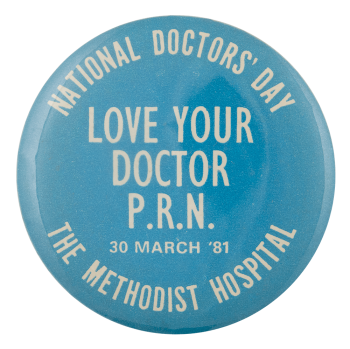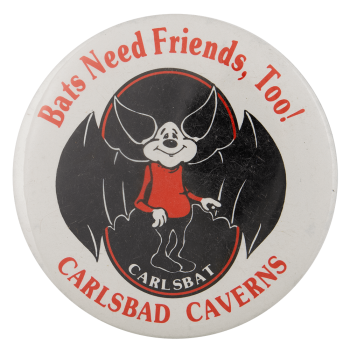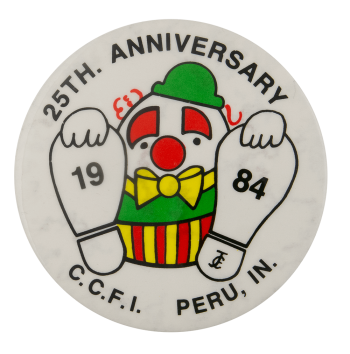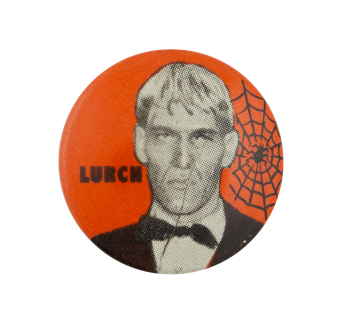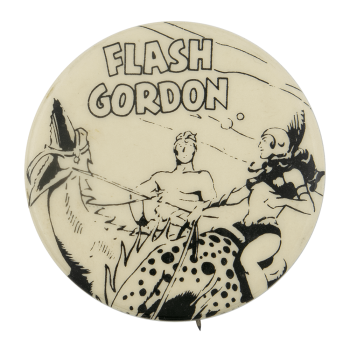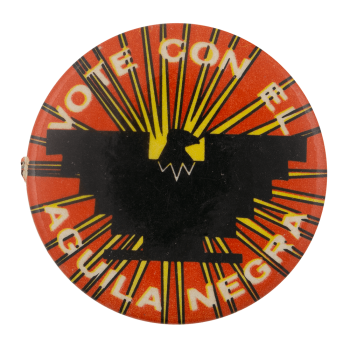National Doctor's Day
| Category | |
|---|---|
| Additional Images | |
| Text on Button | NATIONAL DOCTOR'S DAY LOVE YOUR DOCTOR P.R.N. 30 MARCH '81 THE METHODIST HOSPITAL |
| Image Description | White text on blue background. |
| Curl Text | A BADGE AND BUTTON CORP., MADE IN HOUSTON |
| Back Style | |
| The Shape | |
| The Size | |
| Year / Decade Made | |
| The Manufacturer | |
| Additional Information | National Doctor’s Day is a holiday celebrated on March 30th in the United States to honor past and present physicians and others in the healthcare industry. The first Doctors’ Day observance was March 30, 1933, in Winder, Georgia. The U.S. House of Representatives adopted a resolution commemorating Doctors’ Day on March 30, 1958. The date may vary from nation to nation depending on the event of commemoration used to mark the day. In the United States, Eudora Brown Almond chose the date based on the first use of general anesthesia in surgery. Historically, a card or red carnation may be sent to physicians and their spouses, along with a flower being placed on the graves of deceased physicians.The United States Senate and House of Representatives passed S.J. RES. #366 during the 101st United States Congress, which President Bush signed on October 30, 1991 (creating Public Law 101-473), designating Doctors' Day as a national holiday to be celebrated on March 30. Dr. Marion Mass along with Dr. Kimberly Jackson and Dr. Christina Lang applied to officially have physician’s day changed to physician’s week. This was accepted in March 2017. |
| Sources |
History of Doctors’ Day. (2019). Retrieved 13 November 2019, from https://ideas.hallmark.com/articles/spring-ideas/history-of-doctors-day/ National Doctor's Day. (2019, December 4). Retrieved November 11, 2019, from http://www.holidayscalendar.com/event/national-doctors-day/. |
| Catalog ID | EV0858 |

